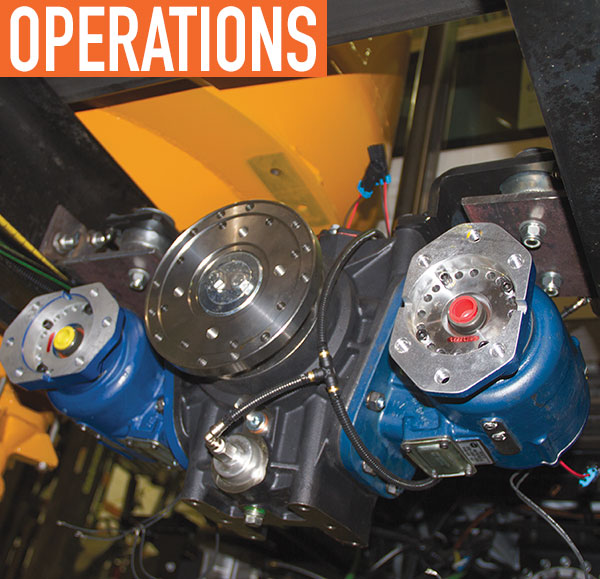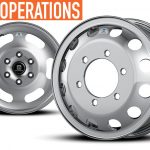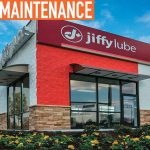A split shaft gearbox has many advantages, which can make it an excellent option for capitalizing on the full potential of your work truck. While very beneficial, there are some considerations to keep in mind as you contemplate using a split shaft gearbox to meet your application needs.
KNOW THE DIFFERENCE
These gearboxes can provide higher horsepower and higher torque capabilities than transmission-mounted power take-offs (PTOs) to run auxiliary components. When transmission PTO openings are obstructed, the split shaft gearboxes provide multiple outputs for auxiliary power equipment.
Split shaft gearboxes are available in different styles and sizes, such as split shaft gearboxes with shiftable driveline or hydraulic pump mount outputs and gearboxes with standard PTO openings that accept different PTOs with various outputs, shift types, and output speeds, depending on your application requirements.
While this may sound like the ultimate solution to capitalize on the full potential of a work truck, you need to be aware of all the elements involved when it comes to using split shaft gearboxes. There are a lot of obstacles that can obstruct or get in the way of utilizing that potential. Cost is a big deterrent, while truck compatibility, installation issues, and operational issues round out the list of these obstacles.

THINGS TO CONSIDER
Depending on the split shaft, the cost of the gearbox alone can greatly exceed the cost of a transmission-mounted PTO. If you use a split shaft that PTOs can be mounted to, you will have to add the cost of the PTOs, as well. Then, you must also consider installation costs. Not all truck modification shops can provide this type of specialized installation.
Compatibility with the truck and transmission is the most often overlooked obstacle, however, to using a split shaft gearbox. Some chassis and transmission combinations are not set up to allow split shaft operation. Their onboard diagnostic systems were not programmed to understand the operating conditions, which can result in fault codes, warning lights, or even drivability restrictions.
Trucks with automatic transmissions need to have a way to be locked into the selected shift range during split shaft operation. If not, when the split shaft is under load, the transmission may shift into a different gear range, changing the input speed to the split shaft. This range shifting can cause undesired performance and possible component damage.

WHAT YOU NEED TO KNOW
Beyond compatibility, there are some installation issues that need to be considered as you determine if a split shaft gearbox is the solution for utilizing the full potential of your work truck.
Space: Is there enough room to mount the gearbox in the chassis? There needs to be enough room to mount the gearbox and the auxiliary equipment that it will be driving. Things like exhaust, air tanks, and fuel tanks can be major obstacles when trying to place the gearbox in the chassis.
Length of the chassis: Not only is length critical for space to mount the split shaft and the auxiliary equipment, it is critical for the required changes to the length and setup of the driveline. Changes to the driveline can create serious vehicle drivability issues if not done correctly.
The parking brake: The parking brake needs to be set during stationary operation. If the truck is not big enough to have air brakes, the parking brake is accomplished by locking the rear drum brakes by cable. Locking the rear drum brakes by cable is not a problem; however, if the parking brake is a driveline drum brake, it will need to be moved from the tail of the transmission to the rear driveline behind the split shaft. If this is not an option, another method of locking the drive wheels while operating the split shaft will need to be provided.
SHIFTS AND STOPS
Operation of the split shaft is usually done in a stationary position. The split shaft is shifted and the rear axle is disengaged from the drivetrain. Most split shaft gearboxes are mechanical shift versus clutch shift. Shifting of the main shaft or an output—into gear or out of gear—requires that the input driveline to the split shaft be stopped before shifting.
Stopping the input for shifting is necessary and must be considered if multiple outputs are to be used during operation. The shifting procedures for split shaft operation are different depending on whether you have a manual or automatic transmission. Operators need to be thoroughly trained on proper shifting procedures to prevent damage.

A FINAL NOTE
With all of these things in mind you will need to remember that a split shaft, when installed, becomes part of the drivetrain of the truck. Just like any other component in the drivetrain, it will need regular maintenance checks, fluid changes and, if something should go wrong, the truck will be out of commission until it is repaired.
So, if you are looking for a way to get more out of your truck than what a transmission PTO opening can provide, a split shaft gearbox could be the perfect solution. But, before you dive in, do your homework. Find out what all will be required to make your split shaft application work.
FOR MORE INFORMATION:
Find out more about the products and services at Muncie Power Products, visit www.munciepower.com.
_______________________________________________________________________
MODERN WORKTRUCK SOLUTIONS: JUNE 2016 ISSUE
Did you enjoy this article?
Subscribe to the FREE Digital Edition of Modern WorkTruck Solutions magazine.
![]()




